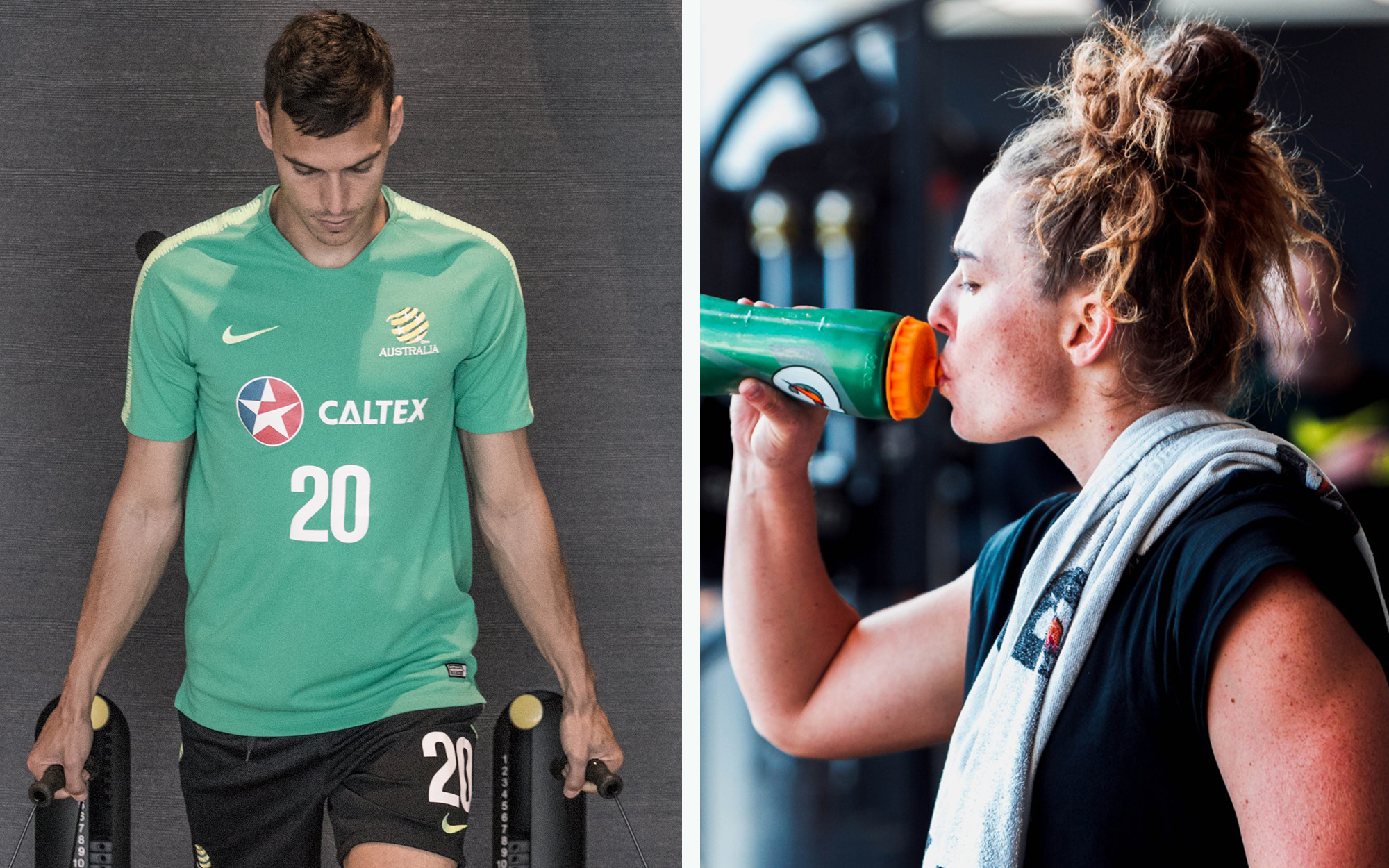STRENGTH TRAINING
Jumping, kicking, sprinting and tussling for a ball all require high levels of strength and power. Research shows that strength training – on and off the pitch – aids the development of these qualities and can help prevent common injuries in both youth and adult footballers [1, 2, 3].
At the elite level, the physical demands of the game are evolving rapidly and most professional environments, including all Australian national teams, incorporate strength training as part of their training programs.

If you are interested in adding strengthening exercises to your training routine, the Football Australia FUNdamentals and Perform+ programs are ideal starting points.
If you want to take your strength training even further, consider the following tips:
Designing safe and appropriate programs that follow the key principles of strength training for elite footballers requires a vast amount of knowledge and experience. Seek the advice of suitably qualified and experienced professionals to design a program tailored to your needs. Exercise or Sports Scientists accredited with Exercise and Sports Science Australia or Strength and Conditioning Coaches accredited with the Australian Strength and Conditioning Association will be able to help you.
Strength training programs for children and adolescents are safe when designed and supervised by appropriately qualified professionals [4]. They are an important component of all stages of long term athlete development [2] and have shown benefits beyond those of performance enhancement and injury prevention, including better metabolic and bone health and improved psychological wellbeing [4].
Strength training exercises for youth can be body weight only or utilise a range of equipment, including resistance bands, medicine balls or child-size barbells, but the focus must always be on developing technical competencies first, before volume or intensity are prioritised [2, 4]. A competent professional will consider your maturation status, training age, technical skills and existing strength levels before selecting an appropriate starting point and progression for your strength training routine.
Gym based – like field based training – must follow the principles of progressive overload, specificity and individuality, which are described in more detail in our article on Periodisation.
Progressive Overload
In strength training, volume refers to the number of sets and repetitions performed, intensity usually refers to the amount of weight lifted for any exercise and load describes the combination of both. Your body will adapt to training stimuli when you are stressed beyond what you are accustomed to and gradually increasing strength training loads ensures you progressively adapt [5].
Specificity
Training adaptations are specific to the muscle groups utilised in an exercise and its metabolic demands [5]. Strength training programs must therefore account for your needs and train the types of actions that you regularly perform on the pitch, e.g. jumping and sprinting, by matching them closely to gym based movements, like squats or box jumps.
Individuality
Every individual adapts differently to training, depending on their training history, maturations status, gender and many other factors [5]. Selecting strength exercises and their loads should therefore be based on your individual needs.
|
Consider the type and timing of your strength training sessions carefully to avoid fatigue impacting your training sessions or matches. Current research suggests that one strength training session per week in-season is enough to maintain pre-season strength gains [6] and that upper-body strength training likely does not impede recovery following matches [7]. Further, strength training sessions that focus on performing exercises at high speeds and low volumes (think short sets of jumps or medicine ball tosses) should not impact on-field performance after 24 hours of recovery [8]. In a typical weekly cycle consisting of a seven day turnaround (matches every Saturday), try performing an upper-body strength training session on Sunday or Monday, a full-body session on Wednesday and a session focussing on high-speed movements and low volume on Friday, on top of regular Perform+ injury prevention work. As with field-based training, the overall volume of strength training work must be gradually increased over time. |
Suggested Reading
- The Australian Strength and Conditioning Association provides a position statement on strength training for children and youth.
References
- J. B. Lauersen, T. E. Andersen and L. B. Andersen, “Strength training as superior, dose-dependent and safe prevention of acute and overuse sports injuries: a systematic review, qualitative analysis and metaanalysis,” British Journal of Sports Medicine, vol. 52, pp. 1557-1563, 2018.
- U. Granacher, M. Lesinski, D. Büsch, T. Muehlbauer, O. Prieske, C. Puta, A. Gollhofer and D. G. Behm, “Effects of Resistance Training in Youth Athletes on Muscular Fitness and Athletic Performance: A Conceptual Model for Long-Term Athlete Development,” Frontiers in Physiology, vol. 7, p. 164, 2016.
- J. R. Silva, G. P. Nassis and A. Rebelo, “Strength training in soccer with a specific focus on highly trained players,” Sports Med - Open, vol. 1, no. 17, 2015.
- R. S. Lloyd, A. D. Faigenbaum, M. H. Stone, J. L. Oliver, I. Jeffreys, J. A. Moody, C. Brewer, K. C. Pierce, T. M. McCambridge, R. Howard and L. Herrington, “Position statement on youth resistance training: the 2014 International Consensus,” British Journal of Sports Medicine, vol. 48, no. 7, pp. 498-505, 2014.
- W. A. Sands, J. J. Wurth and J. K. Hewit, “nsca.com,” 2012. [Online]. Available: https://www.nsca.com/contentassets/116c55d64e1343d2b264e05aaf158a91/basics_of_strength_and_conditioning_manual.pdf. [Accessed 23 3 2021].
- B. R. Rønnestad, B. S. Nymark and T. Raastad, “Effects of In-Season Strength Maintenance Training Frequency in Professional Soccer Players,” Journal of Strength and Conditioning Research, vol. 25, no. 10, pp. 2653-2660, 2011.
- A. Sabag, R. Lovell, N. P. Walsh, N. Grantham, M. Lacome and M. Buchheit, “Upper-Body Resistance Training Following Soccer Match Play: Compatible, Complementary, or Contraindicated?,” International Journal of Sports Physiology and Performance, vol. 16, no. 2, pp. 165-175, 2021.
- K. N. D. O. Goulart, R. Duffield, G. O. C. Junior, G. Passos Ramos, E. M. Pimenta and B. P. Couto, “Recovery timeline following resistance training in professional female soccer players,” Science and Medicine in Football, vol. 4, no. 3, pp. 233-239, 2020.


